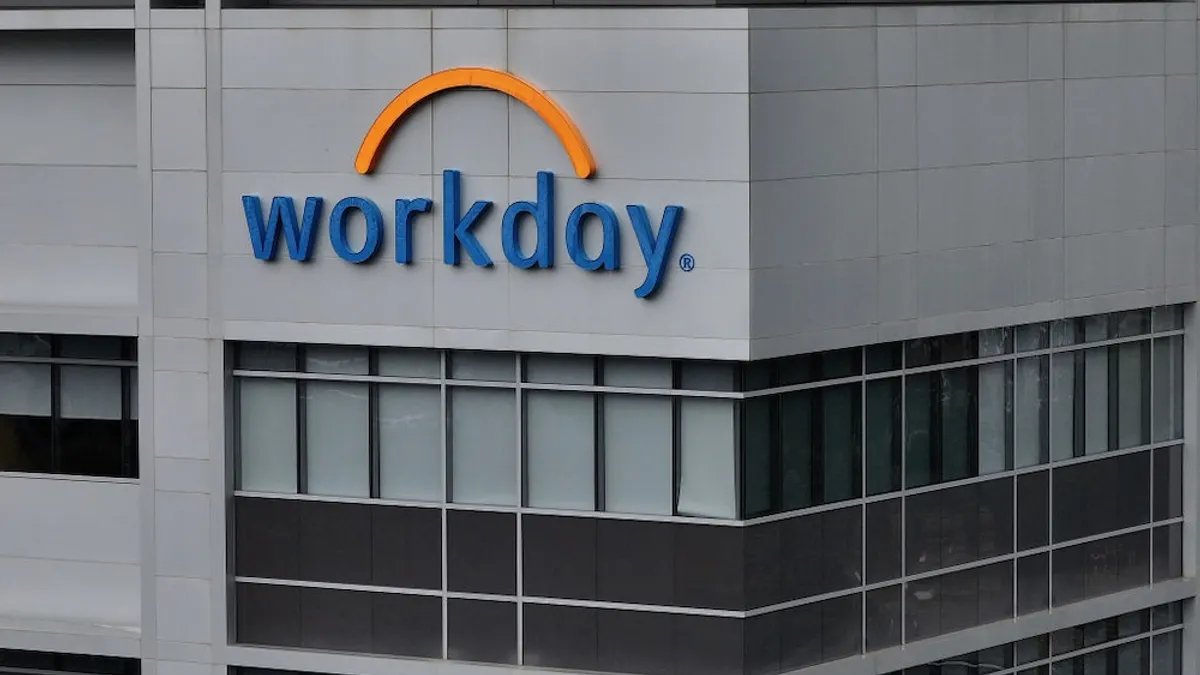Elizabeth Rieveley is chief people officer at MeridianLink.
If you were to ask a random person on the street what an HR professional does, their answer would probably be conflict resolution, or that HR folks deal with employee salaries and benefits. And while that is part of an HR professional’s responsibilities — to ensure employee safety, respect and accountability — that doesn’t even scratch the surface. HR plays a crucial role in developing, nurturing and honing employee skills, starting with identifying, hiring and retaining the right talent.
From my time at MeridianLink, a provider of software platforms for financial institutions and consumer reporting agencies, I’ve learned that hiring and retaining employees is time-consuming and challenging, but with the right tools, it can be done well and effectively.
Identifying talent
Today’s job market is tough, and identifying top talent can be a tedious process. According to ManpowerGroup, 75% of employers report difficulty filling roles, a sharp increase over 36% saying the same 10 years ago. Despite this, employers can use the following five techniques for identifying talent they can depend on.
1. Use talent assessments
Talent assessments are incredibly useful and can be offered in many ways depending on the applicant and/or role. I like to include a small project within the application that requires the applicant to complete a task demonstrating their skills for a particular role. This will give an accurate baseline of whether they have the skills necessary to excel at their job.
Countless other options may help hiring managers find the right talent, including job simulations, asking for writing samples, cognitive ability testing and AI-powered interviews.
2. Standardize the interview process
One of the cornerstones of the hiring process, interviews are essential for assessing a candidate's fit for the role and the company culture. They show you how well candidates think on their feet and can give you insight into how they work in group settings. Interviews are useful for finding out who a candidate is, not just what they can do.
In my interviews, I use the STAR (situation, task, action and result) method. Every candidate is asked the same questions and their answers are rated on a predetermined point scale. This allows for objective scoring and provides realistic comparisons between candidates. Understanding someone’s personality is critical, as you want to ensure they will be a good fit not only within the team but the entire organization’s mission and values.
3. Leverage data to guide your process
Compile the information gathered from each candidate's resume, talent assessment and interview, and use that to inform your decision making process. The more hard data you can compile for each candidate, the better. This data-focused approach helps you objectively compare candidates to each other and assess where there may be weaknesses in each individual. Data empowers the hiring manager to make evidence-based decisions.
At MeridianLink, each of our hiring managers uses an applicant tracking system to understand how interviewers rate, give feedback and engage with candidates to see whether there are challenges or discrepancies present across applicants. My human resources team then uses this data to train managers and interviewers accordingly. Additionally, we use early turnover data to explore how it correlates with manager feedback and any other trends.
4. Be open to changing your process and embrace learning
There isn’t just one way to hire. Recruiters need to be adaptable and embrace new hiring methodologies to stay ahead of the competition.
In addition to seeking advice and best practices from HR professionals at other companies or in other industries, it’s important to solicit feedback from your employees, the people who actually experience the hiring process. Asking your employees for input serves the dual purpose of improving the applicant experience, thereby increasing the chance to attract and retain top talent, and also showing your colleagues that HR takes their feedback seriously.
5. Know that hiring is changing
According to recent studies, talent professionals agree that virtual recruiting will soon become the standard. That’s why implementing varied hiring methodologies, including using AI to expedite processes and technology trends, is necessary to ensure you’re keeping up.
But never underestimate the power of old-school strategies, like referrals. Asking your employees for referrals is an excellent way to tap into talent existing networks and demonstrate to your current employees that you value their insight. This ties into creating a strong company brand and culture to attract top talent.
Additionally, hiring events are extremely valuable as they provide HR and other hiring managers the chance to meet potential candidates outside of the traditional hiring process. These can be mixers, job fairs or conference panels. And because virtual recruiting is on the rise, different tools can now supplement such events.
Retaining talent
While finding the right candidate takes time and effort, retaining talent is equally as important and requires focus and diligence. The first thing to know is that retaining employees doesn’t start on their first day of the job. At MeridianLink, onboarding begins as soon as they are hired.
For remote employees, give them their computer as early as possible before their start date, and set them up with IT so there are no glitches on their first day. An effective and attentive onboarding makes sure new hires feel welcome, heard and cared for. More importantly, it helps to ensure everybody is on the same page when it comes to the onboarding process.
One of the most effective strategies I’ve seen at MeridianLink is offering new employees a mentor for their first 90 days of employment, separate from their day-to-day manager. The mentor helps employees learn about the company, is available to answer any questions, and performs frequent check-ins so any concerns are addressed as they arise, not when it becomes an issue. Retention is not just about hiring the right people; it’s about creating a positive and supportive work environment in which the right people can thrive.
We make a point to regularly check in with managers to see what they need and to learn what we can focus on to help teams stay motivated. Manager insight is always valuable.
One of the most important things an HR professional can do is listen to employees and potential hires. By doing so, you’re opening the door to crucial conversations that will serve your organization better in the long run.




















